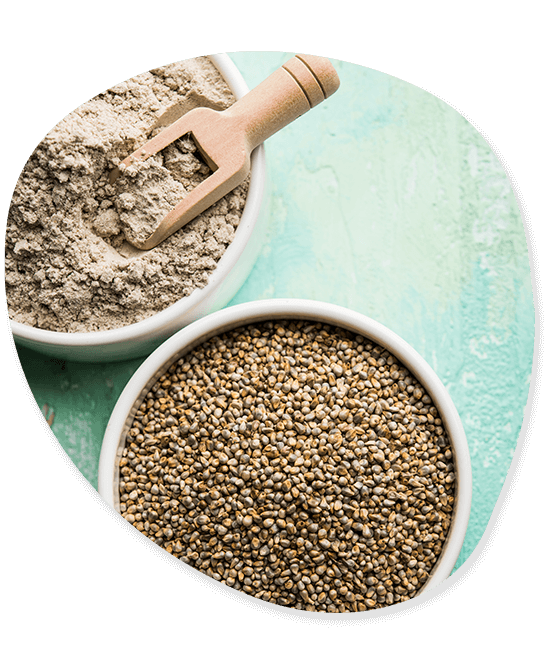Millet
A millet, or annual grass, pearl millet is upright and can grow up to three metres tall, with a thick root system. Because of the rising demand for pearl millet worldwide, India’s exporter of the grain ships tonnes of millet out each year. Other uses and advantages of pearl millet have also been documented, including some medical and health advantages. As a result, it is anticipated that India will export Pearl millet at a high rate in the years to come. The export of their products to several nations throughout the world generates huge profits for the Indian pearl millet exporter. One could argue that food exporters now have a solid commercial opportunity with the export of pearl millet.

Nutrients:
- Calories – 378 calories
- Carbohydrates – 73g
- Dietary Fiber – 17g/200 grams
Vitamins:
Minerals:
Protein:
Pre-Shipment Inspection:
Standard Packing:
MILLET VARIETIES WE EXPORT
Giant Bajra, Raj Bajra Chari-2, APFB-2, and other types of Pearl Millet are among the varieties of Pearl Millet that are imported from India. The Pearl Millet Exporter in Indi exports millets of the highest quality to several nations. These essential types are part of India’s exports of pearl millet.

GIANT BAJRA
The entire Bajra growing region has approved the cultivation of this kind of pearl millet. The plants of this type show abundant tillering, are leafy, and have 9–10% protein at the boot stage. This type has a reputation for having a fair amount of resistance to ergot and downy mildew infections.

RAJ BAJRA CHARI-2
The entire Bajra growing region has been authorised to cultivate this kind of Peral Millet. The output of green fodder is approximately 30-45 t/ha. Raj Bajra Charra-2 has foliar disease and insect pest resistance. Internodes are entirely encased in the leaf sheath at the ear emergence stage, and the leaves are glossy and large.

APFB-2
Pear millets of the APFB-2 variety are advised for planting in Andhra Pradesh. This variety is best suited for planting in the summer and the early Kharif. It is non-lodging, belongs to the early maturity group, and responds to fertiliser. The plant height is between 160 and 180 cm, and the production of green fodder is about 25 t/ha.

PCB-164
PAU, Ludhiana has produced the PCB-164 variety of Pearl Millets from five late maturing lines. The north-west region of India has been approved for the growth of this kind of pearl millet.

AVIKA BAJRA CHARI (AVKB-19)
Rajasthan, Haryana, Punjab, the Tarai region of Uttarakhand, and western Uttar Pradesh have all been advised to cultivate the Avika Bajra Chari variety. This variety, also known as AVKB-19, is believed to have a dual function with a potential output of 10.2 q/ha seeds, 8.8 t/ha of dry fodder, and 36.7 t/ha of green fodder.

NARENDRA CHARA BAJRA-2 (NDFB- 2)
NDUA&T, Faizabad, is the company that produced the Narendra Chara Bajra variety. It has been advised to grow this kind of pearl millets in salt-affected soils in the north-eastern zone, where pearl millets are traditionally grown.

FBC-16
The entire region of north-west India has been approved for the production of Pearl millets of the FBC-16 type. According to reports, this type is multi-cut and disease resistant. The cultivar has a high voluntary dry matter intake by the animals and a low oxalate content. This variety has a potential yield of 70–80 t/ha for green fodder.

TNSC-1
In 1995, the entire nation’s Bajra-growing region was advised to cultivate this kind of Pearl millets, which was developed by TNAU, Coimbatore. The TNSC-1 cultivar is believed to be resistant to foliar diseases and insect-pests and can produce between 27 and 40 t/ha of green fodder.

OL-125
Using Appler and IPC-163, intervarietal hybridization was used to create the OL-125 variety of oats, which was then bred and selected using pedigrees. The variety was made available for planting in the north-west and central regions of the nation in 1995. This variety produces 58 t/ha of green fodder and can be used for single or multiple cuts.
